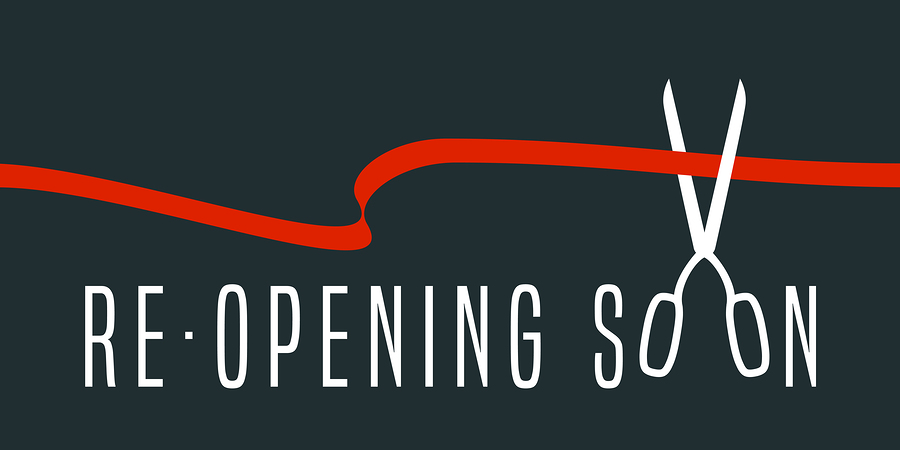
Questions for Helping Businesses Survive the COVID
Developing Your 90-Day Plan
Those who want to make sure their businesses survive this pandemic will want to achieve a laser-like focus. It is important to realize that the forced downtime triggered by the pandemic affords you the opportunity to work on potentially neglected aspects of your business.
Summed up another way, now is the time for dynamic and focused action. In this article, we’ll address what you can do to help your business survive this unusual time period.
Reevaluating Your Business
It’s time to step back and look at every aspect of your business, including your processes. You should be encouraged to find new ways of doing things. In short, now should be viewed as a time of opportunity to reboot your business. That way when the pandemic has subsided, and your business picks up once more, it is more efficient, more effective, and more competitive.
Scott Bushkie, Founder and President of Cornerstone Business Services, recommended that business owners create 90-day plans where they look for ways to innovate. This strategic plan should focus on what they are going to do and what they want to accomplish. It is critical that there is an actual plan that achieves tangible results and not simply a list of things that should be accomplished. Listed below are a few questions you should be pondering.
- How can I outperform the competition?
- How can I innovate?
- How can I increase my use of technology?
- How can I deliver my products and services in a different way?
- How can I reduce my operational costs?
- Have I reached out to my suppliers and creditors for assistance?
- Have I applied to applicable SBA COVID-19 focused programs?
- What do I want to accomplish in the next 90-days?
It’s Time to Reboot
The main point is that businesses should not look at this pandemic situation as some sort of “miserable and stressful vacation,” but instead as an opportunity to reboot what is not working, and look for ways to make improvements in every aspect of your business. This process begins by asking the right questions and striving to find the answers.
In answering these questions and finding ways to help boost your rates of survival, you should turn to every asset at your disposal. Why not ask your management team as well as all of your employees for ideas that could help their business? Everyone should understand that owners are looking for ways to keep their business healthy while navigating the pandemic.
Now is the time for reflection, short-term and long-term planning, and tangible actions. Business owners should also consult with a range of business professionals, including, of course, business brokers and M&A Advisors. Brokers are uniquely positioned to help business owners through this crisis.
Copyright: Business Brokerage Press, Inc.
The post Questions for Helping Businesses Survive the COVID appeared first on Deal Studio – Automate, accelerate and elevate your deal making.

6 Tips and 90 Days to Protect Your Business
There can be no way around it, Inc. contributor Brian Hamilton’s April 2020 COVID-19 centered article, “6 Actions to Take in the Next 90 Days to Save Your Business,” isn’t pulling any punches. Hamilton, Founder of the Brian Hamilton Foundation, believes that the next 90-days could be make or break days for business owners looking to navigate the choppy waters of the COVID-19 pandemic. His latest Inc. article provides readers with 6 actions they should take now to survive the economic fallout of the COVID-19 pandemic.
Tip #1 Vigorously Control What You Can
Hamilton’s first tip is to “Vigorously control what you can. Vigorously ignore what you can’t control.” As Hamilton points out, you can’t control the economy; instead, you need to focus on what you can control. His view is that there has never been a more important time to focus, “More than ever, you’ll need to go to war with things within your control.” Now is the time to exercise control.
Tip #2 Guard Morale
During tough economic times, employee morale can be a real issue. This brings us to Hamilton’s second point, “guard employee morale.” Significant drops in employee morale can lead to serious problems with your business, which is exactly what you don’t want to see right now. Hamilton notes that you have to be the general that helps his or her troops rise above potential panic.
Tip #3 Preserve Cash
Hamilton’s third tip is to “preserve cash where you can.” He states, “Right now, your motto should be: Live to fight another day.” The pandemic means that you need to keep expenses down and watch every dollar. No one knows what the next few months, or the next couple of years, could have in store.
Tip #4 Be First in Line
“Be first in line,” is Hamilton’s fourth point. Hamilton wisely pushes business owners to be the first in line for government assistance. This is very good advice, as SBA and other funds are likely to be limited.
Tip #5 Get Back to the Basics
Fifth, Hamilton recommends, “Get back to the basics…starting with monomaniacal customer service.” As always, customers, whether existing or new, are the lifeblood of your business. You can’t afford to lose customers now and for this reason, you need to have a laser-like focus on customer service.
Tip #6 Pivot your Product or Service
Hamilton’s sixth tip is to “Pivot your product or service to new conditions.” Small changes to your business can open up new streams of revenue. Even if these streams of revenue are comparatively small, they could mean the difference between sink or swim! Try to step back and look at your business with fresh eyes and strive to find ways to offer something new to your customers. Whatever you offer should be based on your existing goods and services and not require a new, large expenditure.
The COVID-19 pandemic is obviously disruptive, but it won’t last forever. Hamilton’s advice of focusing intensely on the next 90 days is sound advice. You won’t regret looking for ways to safeguard your business for the next 3 months.
Copyright: Business Brokerage Press, Inc.
The post 6 Tips and 90 Days to Protect Your Business appeared first on Deal Studio – Automate, accelerate and elevate your deal making.

Improving Your Telework Habits
In her recent April 20th, 2020 Forbes article, “Three Keys to Engaged, Productive Telework Teams,” author Rajshree Agarwal, who is a professor of Strategy and Entrepreneurship, explored how to get the most out of telework. This highly timely article covers some very important territory for many companies dealing with the COVID-19 pandemic. Let’s explore Agarwal’s key points so that you can help your team get the most out of telework.
Agarwal notes that people may tend to shy away from sharing personal information and feelings while in the office. But via video conferencing, the story can be different. For this and other reasons, it is necessary for employers to keep in mind that the dynamic between you and your employees may be different when you use video conferencing. This will also often be the case when your employees speak with one another.
She prudently cautions business owners from taking a “business-as-usual” approach to the COVID-19 situation, as it can make them look both unnecessarily cold and out of touch with reality. On the flip side, however, it is also important to not dwell on the negative aspects of the pandemic. Offering some sense of normalcy during the COVID-19 pandemic is a smart move as well.
How you use telework and video conferencing is, in part, about developing the correct balance. On one hand, you’ll want to acknowledge that the situation is serious and must be addressed. But on the other hand, you don’t want to dwell on the pandemic. After all, not effectively handling the work at hand could undermine your business and cause other problems for both you and your employees.
It is in everyone’s best interest to be smart, safe, and acknowledge the bizarreness of the current situation while striving to achieve business goals. The keyword here is “balance.” Agarwal states that “The combination of empathy and purpose unifies individuals, allowing team members to channel their efforts towards shared objectives and values. This is the best antidote for anxiety.”
From Agarwal’s perspective, there are three keys to making telework effective: communication, socialization, and flexibility. First, there has to be good communication. For example, people can’t simply ignore one another’s emails because they are working virtually. She points out that real-time meetings via Zoom or Skype can eliminate some communication issues, but not all.
The second factor to consider is socialization. As Agarwal points out “Engaged, productive teams also take time to socialize.” Working from home alters the typical modes and methods of socialization, but virtual interactions can be used to help people form and develop their social networks.
In short, socialization doesn’t have to end once telework begins. Used judiciously, socializing, and the bonds it creates between co-workers can still continue.
Agarwal’s third key is flexibility. Flexibility is critical, as all team members must adjust to what, for some, may be a fairly radical restructuring of their day-to-day work experience. Those who haven’t worked virtually before may find adjusting to be quite a challenge. Management should strive to be more flexible during telework caused by the COVID-19 pandemic. Trying to maintain the same top-down approach could prove to be problematic.
It goes without saying that telework presents challenges. However, the challenges it represents are not insurmountable. There are benefits to teleworking, and teams can use it to generate solutions that they might have not reached in the typical work environment.
Copyright: Business Brokerage Press
The post Improving Your Telework Habits appeared first on Deal Studio – Automate, accelerate and elevate your deal making.

How to Connect During a Crisis
Small business owners are facing new challenges during this crisis. Communicating with customers requires more focus and depth than ever before. In Mat Zuker’s latest article for Forbes Magazine, he cites Jay Mandel who runs The Collective NYC, a marketing consulting team focusing on a customer’s experience, who underlines the importance of businesses to understand their mission statement and values in order to re-enforce marketing strategies.
Information is Crucial. Each customer purveying your business’s website needs to understand your hours of operation, any limitations to service and what is being done to ensure cleanliness. Providing this information establishes to your customer your seriousness of precautions which will be appreciated during this time.
If your financial situation allows, focus on your employees, donate to charities or offer discounted or free products. By marketing this information, your brand’s scope will bolster with the customer as well.
Utilizing the Customer’s Time. Most customers are adhering to social distancing guidelines put forth by their state and the federal government. Now, more than ever, it is important to exhibit to your customers how your brand can be utilized beyond your brick and mortar. Zuker cites how universities are beginning to offer free online classes and telecommunication companies are offering two months of free service to low-income families; King Arthur flour is promoting its library of comfort food recipes (yes, please!). Thinking beyond your storefront to put your service or product into your customer’s virtual hands is important.
Remember to entertain. By each passing day, customers are looking for new stimulation to help the time go by at home. Movie companies are making the best of the situation by sending theatrical releases to online streaming services. We don’t think it is necessary to always make your customers laugh, but it might be within your branding to aim for content geared towards warmth, humanity and empathy.
The metric for engaging your customers is changing; moving beyond views and shares to quality feedback or social impact on your community. Do not bite off more than you can chew. Cited in Zuker’s article, Social Media Today warns of virtue signaling; meaning declaring a set of values, but not following through on the actual deeds.
Also, this is a fantastic opportunity to consider your marketing strategies for when this crisis ends. What will your business look like once you are able to open the doors? How are you able to stay relevant with your competitors? These are all questions needing answers, but today we must do our best to accomplish what is in front of us.
Read Mat Zucker’s full article here: https://www.forbes.com/sites/matzucker/2020/04/01/content-in-a-crisiswhat-brands-can-deliver/
Copyright: Business Brokerage Press, Inc.
The post How to Connect During a Crisis appeared first on Deal Studio – Automate, accelerate and elevate your deal making.

Don’t Fear Failure, Learn from It Instead
Failure is rarely fun. But it is also a key ingredient in success. While failure can be painful, there is no doubting the fact that the lessons that come from failure can be powerful teachers that provide life-long lessons and even life-trajectory altering results. Summed up another way, failure hurts. But on occasion, not failing could hurt more, especially in the long run.
In her Inc. article, “Why Tons of Failure Is the Key to Success, According to Seth Godin,” author Sonia Thompson, CEO of Thompson Media Group, points out that most people “avoid failure like the plague.” Instead, they spend their time trying to achieve perfection. In the process of adopting this approach, people miss all kinds of opportunities because they are afraid of damaging their egos. Embracing failure is a way to experience many “transformational benefits,” which would never be experienced without the lessons of failure.
Thompson points to the work of 18-time best-selling author Seth Godin who has written about how entrepreneurs who fail more often perform at a higher level. She quotes Godin as follows, “The rule is simple. The person who fails the most will win. If I fail more than you do, I will win. Because in order to keep failing, you’ve got to be good enough to keep playing.” Godin continues that failure imparts a gift of sorts in that it teaches us how to distinguish between a good idea and a bad idea.
As Thompson notes, research supports the notion that if you want a breakthrough idea, you will need to “produce an enormous volume of ideas.” Obviously, most ideas won’t work, but that isn’t the issue. The issue is to work your way through the bad ideas to get to the winners. Sure, it would be great to have nothing but winners. But life and reality don’t work that way. Failure should be seen more as a path forward than the end of the road.
Getting comfortable with failure, in Thompson’s view, is critically important. She believes entrepreneurs should take steps that make them more comfortable with failure, such as detaching oneself from the results.
It is vital to remember that you are not the work. In contrast, the work is part of an ongoing process. Getting good at something takes time, and there will be failures. For this reason, entrepreneurs simply must embrace a “growth mindset.” Don’t think of failure as failure, but instead as part of a learning process. There is no denying that this approach will make you calmer and that, in turn, may help you make better decisions.
There will be failure in life. There will be problems and there will be obstacles. Much will happen that you can’t predict, manage or control, such as the COVID-19 outbreak. The trick is to focus on what you can control and move forward without a paralyzing fear of failure. Because in the end, failure may be one of your best tools.
Copyright: Business Brokerage Press
The post Don’t Fear Failure, Learn from It Instead appeared first on Deal Studio – Automate, accelerate and elevate your deal making.

Getting Back to Business After the COVID-19 Pandemic
Historians have long known the historical relevance and impact of epidemics and pandemics. Despite our various technological advances and the complexity of our society, disease can instantly change the course of history. Not having a robust global system for dealing with disease and pandemics comes with a hefty price tag. In the case of the COVID-19 economic crisis, the price tag will no doubt be in the trillions.
You can’t control what has happened, but you can focus on what to do when the pandemic is over and life begins to slowly return to normal. In his recent article, “How to Hit the Ground Running After the Pandemic,” author Geoffrey James explores what businesses need to do to jumpstart their operations once the pandemic is in the history books.
James wants his readers to understand that the pandemic will end and that business owners need to be ready to charge back in when the pandemic is over and the economy rebounds. As James points out, if history is any indicator, the economy will eventually rebound.
Almost everything about this economic downturn is unique. Take, for example, the fact that the U.S. has just seen its largest-ever economic expansion. The gears and wheels of the economy were spinning along quite quickly before the pandemic hit. This could help restart the economy faster than in past severe economic downturns. In short, many experts feel that this particular economic downturn could be short, but of course, this is speculation. There is no way to know for sure until COVID-19 is in the rearview mirror.
James correctly asserts that businesses need to put together a plan for how they will get up and running as soon as the pandemic is over. His recommendation is to divide your plan and thinking into four distinct categories: Facilities, Personnel, Manufacturing, and Marketing.
Each of these categories has three key questions that business owners should be asking themselves so that their businesses are ready to hit the ground running when COVID-19 is over. Below are a few of the key questions James recommends asking.
- How can we create the most sanitary and disease-free workplace possible?
- Which employees will continue to work from home?
- When there’s a spike in demand, how will we ramp-up?
- What will be our “We’re Back!” marketing message?
The pandemic caught everyone except the experts off guard. Moving forward, business leaders, think tanks, and politicians alike need to work to develop and implement robust plans to minimize the damage caused by pandemics. Humanity, and business, has been “lucky” several times in recent years, as we dodged bullets ranging from Ebola to SARS.
As James points out in his article, “Failing to plan is planning to fail.” Businesses need to plan for the recovery and they need to plan for another pandemic because another one is quite possible especially if better planning and decision making are not firmly entrenched in place.
Copyright: Business Brokerage Press, Inc.
The post Getting Back to Business After the COVID-19 Pandemic appeared first on Deal Studio – Automate, accelerate and elevate your deal making.
